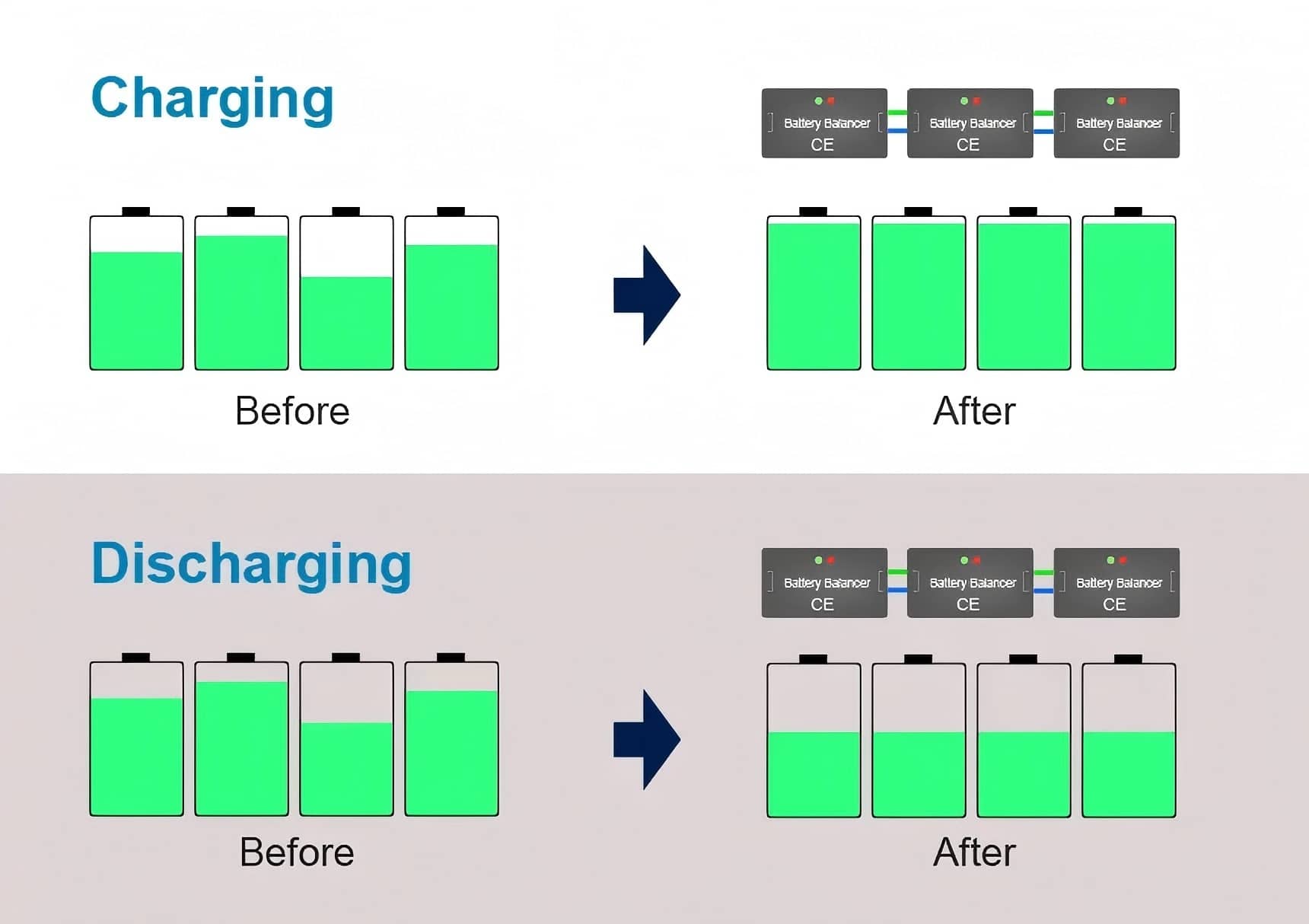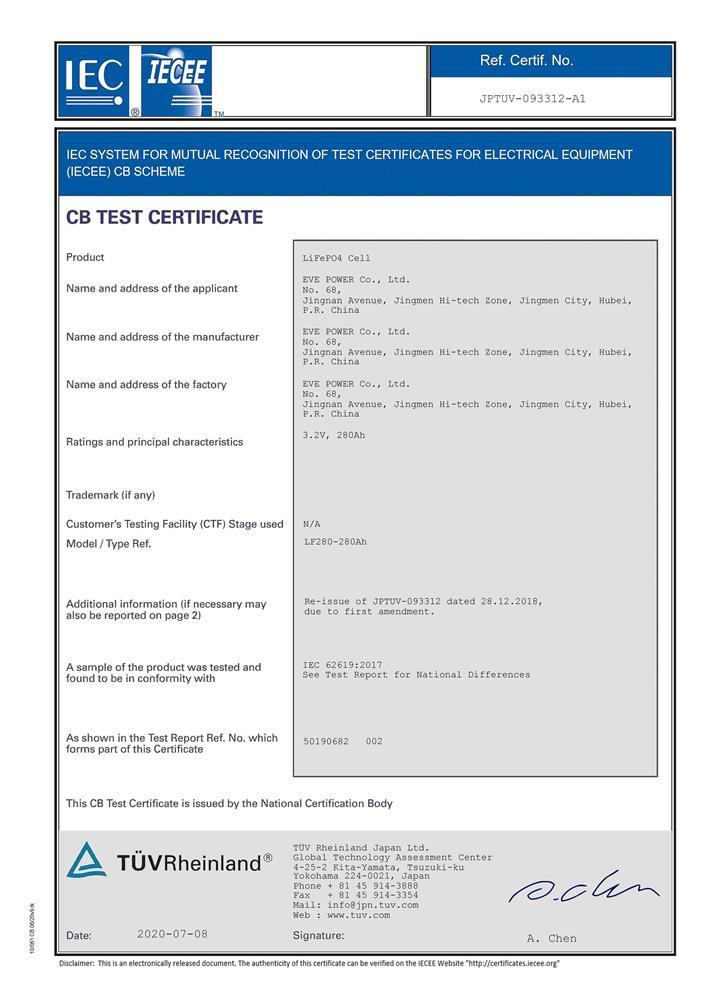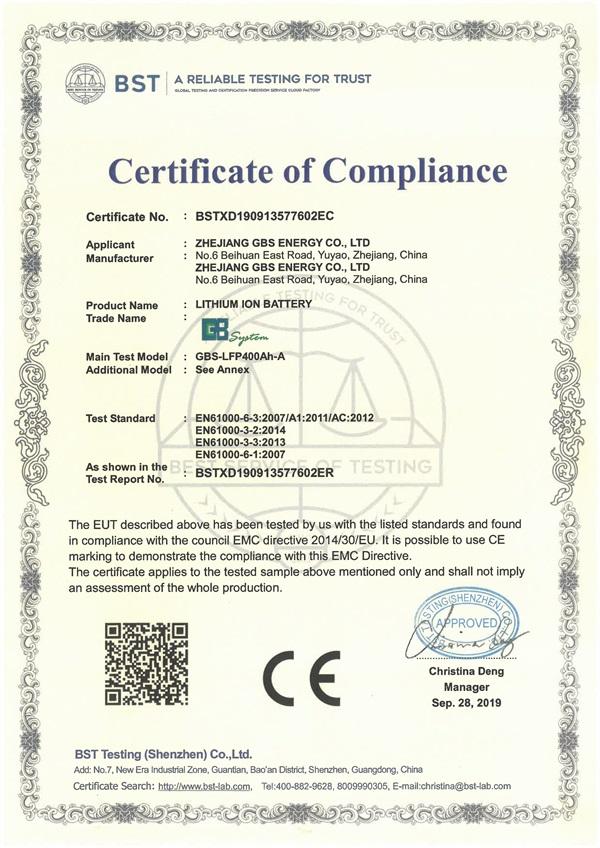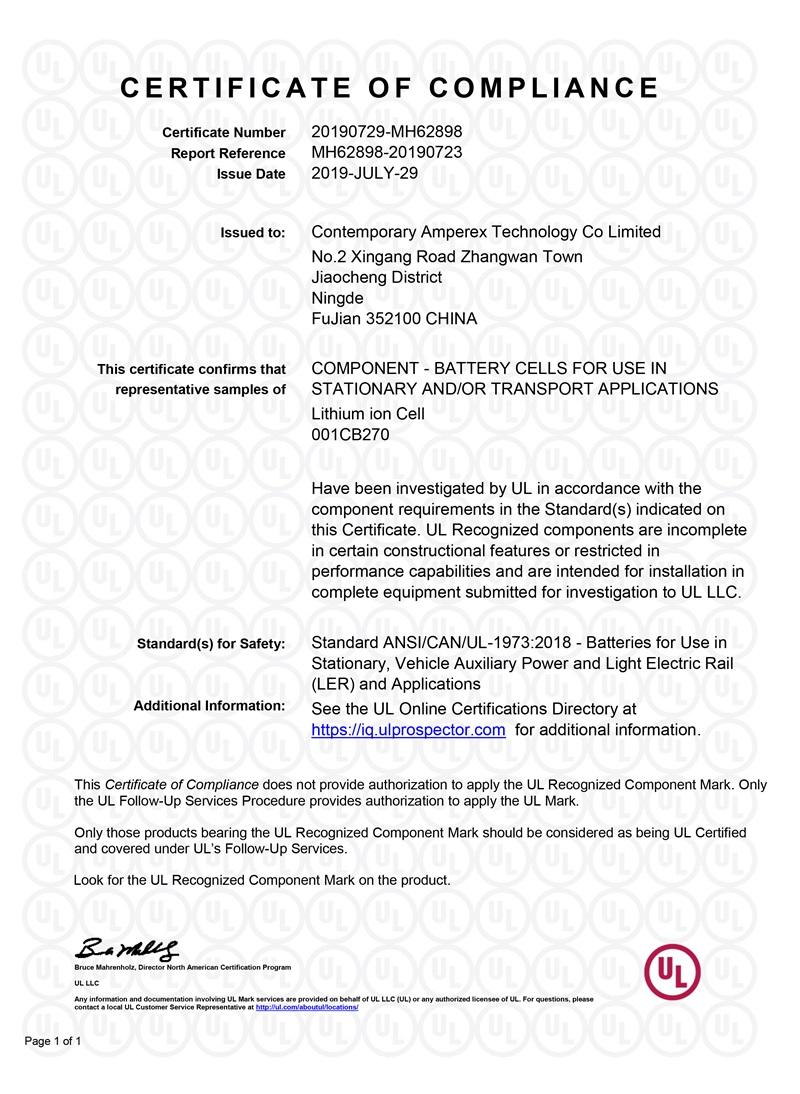Blog
How to Balance LiFePO4 Batteries: Complete Guide
2025-10-06 | Calvin

Balancing LiFePO4 cells (lithium iron phosphate cells) isn’t optional — it’s essential. Proper cell balancing improves runtime, protects the pack from over-charge/over-discharge, and extends cycle life.
Table of Contents
- What is LiFePO4 battery balancing?
- Two broad balancing approaches
- Top balancing vs bottom balancing — choose based on how you use the pack
- Step-by-step: How to balance LiFePO4 cells (manual method)
- When balancing won’t help?
- FAQ
- Conclusion
What is LiFePO4 battery balancing?
Battery balancing (or cell equalization) is the process of making each cell in a pack hold the same state of charge (SoC) and voltage. When cells are mismatched, the weakest cell limits usable capacity and the strongest cell sets the pack’s cut-off voltage — the so-called “barrel effect.” That mismatch reduces runtime, increases safety risk, and accelerates degradation.
Two broad balancing approaches
Passive balancing
Passive balancing removes small amounts of excess charge from the higher-voltage cells (usually via resistors). It’s simple and low-cost, works fine for small packs, but wastes energy as heat and is slower at correcting imbalance.
Active balancing
Active balancing transfers charge from higher-voltage cells to lower-voltage ones using DC-DC circuits or capacitor charge shuttles. It’s more efficient (no energy wasted as heat), better for large / high-capacity packs, and prolongs pack life — at higher complexity and cost.
Top balancing vs bottom balancing — choose based on how you use the pack
- Top balancing: balances cells at full charge (near their maximum voltage). Best when your pack needs maximum usable energy and is regularly charged to full. It reduces the risk that a single weaker cell will be over-charged during charging.
- Bottom balancing: balances cells at a low, safe voltage before charging. It’s preferred if you prioritise safe, symmetrical discharge behavior — for example, packs that are regularly deeply discharged.
Rule of thumb: If your system is charge-heavy (frequent full charges), favour top balance. If you discharge deeply and rarely top-up, consider bottom balance.
Step-by-step: How to balance LiFePO4 cells (manual method)
Manual balancing is OK for hobbyists and small DIY packs. For production or large packs, use an appropriate BMS + active balancer.
- Safety first. Wear eye protection and insulated gloves. Work in a non-conductive area. Never short cell terminals.
- Measure each cell. Use a reliable multimeter and record the open-circuit voltage of each cell. LiFePO4 nominal cell voltage ≈ 3.2–3.3 V; full ≈ 3.6–3.65 V; safe minimum ≈ 2.5–2.8 V (check cell datasheets).
- Decide top vs bottom balancing. (See previous section.)
- Parallel equalization (common manual method). If voltages differ significantly, you can parallel the cells (positive to positive, negative to negative) — but only if cells are within a safe voltage window and you understand the risks. When paralleled, higher-voltage cells will naturally share charge until voltages equalize. Monitor temperatures and voltages constantly.
- Top balance by controlled charge: Charge cells individually to target full voltage (e.g., 3.60–3.65 V for LiFePO4) using a bench power supply or individual chargers, then assemble the pack.
- Bottom balance by controlled discharge: Discharge cells individually to your chosen low target (e.g., 2.75–2.80 V), then assemble.
- Verify with BMS / multimeter. After assembly, check each cell voltage under resting conditions. If differences reappear, use an active balancer or replace weak cells.
Caveats: Manual balancing is slow, risky if mis-handled, and won’t “fix” badly aged or defective cells — it equalizes, it does not restore lost capacity.
When balancing won’t help?
Cell balancing cannot resurrect a physically degraded or shorted cell. If one cell lags significantly in capacity or internal resistance, the correct action is replace that cell — otherwise the “barrel effect” will continue to limit pack performance.
FAQ
Q: Do I need balancing for a single cell?
A: No — balancing is only for multi-cell packs.
Q: Can a BMS do it all?
A: A BMS with active balancing covers most needs. For high-capacity packs, an external active balancer may still be useful.
Q: How often should I balance?
A: Regular balancing is part of routine maintenance — weekly/monthly checks for frequently used systems; before commissioning new packs; and whenever cell voltages diverge beyond manufacturer limits.
Conclusion
Balancing is a small investment that protects your LiFePO4 pack, unlocks usable capacity, and prevents costly failures. For DIY hobbyists, manual balancing combined with a good BMS can work — but for commercial or high-duty systems, use matched cells, a quality BMS with active balancing, or add a dedicated active balancer.
- Next:Which is better NMC or LFP for EV?
- Previous:Tesla Battery Types: A Simple Guide for Model S, 3, X, and Y
Contact Details
Lithium LiFePO4 Batteries and Lithium LiFePO4 Cells Supplier - LiFePO4 Battery Shop
Contact Person: Miss. Elena Wang
WhatsApp : +8615263269227
Skype : +8615263269227
WeChat :15263269227
Email : info@lifepo4batteryshop.com
All Products
- A123 Battery (5)
- Sinopoly Battery (7)
- GBS Battery (16)
- CALB Battery (22)
- Cylindrical Cell (3)
- Energy Storage System (0)
- Battery Management System (2)
- Sodium ion Battery Cell (3)
- Lithium Titanate Battery (16)
- Ternary Lithium Battery Cell (11)
- REPT Battery (8)
- BYD Battery (2)
- CATL Battery (14)
- Thunder Sky Winston Battery (21)
- EVE Battery (29)
- LiFePO4 Battery Cell (4)
Certification
Customer Reviews
- I have fond memories of our meeting in Shanghai with LiFePO4 Battery Shop Elena. Your company left a strong impression on me with its impressive growth and professionalism. We both value straightforwardness and honesty, which I believe are the most important qualities in any partnership. I am confident that we can build a successful collaboration based on these shared values. —— Robert from USA
- I've been working with LiFePO4 Battery Shop for years, and their reliability is unmatched. While other suppliers frequently change sales teams, LiFePO4 Battery Shop has consistently provided exceptional service with a stable team. Their commitment to quality and customer support truly sets them apart. —— Henry from Australia



